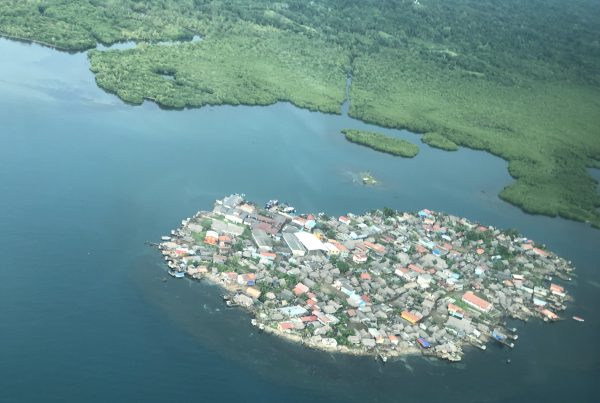The population of the Ogiek of Mount Elgon is about 18,000 and about 3,000 Ogiek still live on our ancestral lands in Chepkitale on Mount Elgon, which supports a rich variety of vegetation ranging from montane forest to high open moorland. As hunter gatherers indigenous to this area, our rights to our lands are recognised by Article 63(2)(d)(ii) of the Kenyan Constitution. But the fact is that the Government has not put this into practice, and this is a bone of contention for all forest communities in Kenya, not just for the Ogiek.
The Ogiek’s struggle and impacts of evictions
In the 1930s the effects of land dispossession and colonialism really started to be felt by the Ogiek. The communities were first evicted from their lower lands and restricted to the higher mountain forest areas when the lower lands were taken by British colonialists for farming. The forests were then gazetted as protected areas and a tiny part up on the moorlands was set aside as a native reserve. From 2000 onwards, the community’s struggles have become more urgent, especially after the final part of the community lands in the native reserve was gazetted as Chepkitale Game Reserve, following the conversion of other parts as Mount Elgon National Park in 1968. Communities have been evicted from all these areas except Chepkitale, to where we have kept returning after every eviction. Every community member has been a victim of evictions; I doubt that there is a single Ogiek family that has not faced evictions. I have experienced evictions four times myself; others have been evicted many more times.
These evictions have broken communities and families. Many acts of violence have been committed, such as burning of our houses and confiscating or burning of our belongings. Impacts have included restrictions on harvesting of forest resources, which has threatened our food security. This was very pronounced in the fifties and seventies, when it exposed the community to unimaginable hunger. Another negative impact has been the lack of access to medicinal plants.
Some of those who have been completely evicted from the forests were forced to change their livelihoods and become farmers. These evictions have not only had negative impacts on communities’ livelihoods but also on the forest itself.
Corruption amongst government officials has had a negative impact in many of these supposedly protected areas, not only through facilitating the establishment of timber plantations but also through encouraging charcoal burning, elephant poaching and so on, all of which the Ogiek community opposes.
Application of the Whakatane assessment: a way to facilitate conflict resolution
In 2011, IUCN agreed to pilot rights-based assessments of protected areas as part of the “Whakatane Mechanism” to address the injustices that have been inflicted on indigenous peoples through the creation of protected areas. One of the pilot assessments took place at Mount Elgon. It focused especially on the Ogiek land that had been turned into the Chepkitale Game Reserve in 2000 without our consent.
The assessment took place in three stages: a first stakeholder roundtable discussion, a scoping study, and then another roundtable discussion. The discussions took place in Nairobi and involved the Ogiek communities, Kenya Forestry Service (KFS), Kenya Wildlife Service (KWS), the Ministry of Environment, the IUCN country office and the local government.
The Whakatane Mechanism really helped us to have amicable discussions with the different actors and it became clear that the different interests could indeed be consolidated and that a win-win situation could be achieved. It became clear to all stakeholders that the communities were not interested in destroying the forest; if they were, they would already have done so long ago.
One outcome of the assessment was the recommendation that the land should revert back to the Ogiek community. The County Council declared in a resolution that they would not oppose this and from 2012 until June 2016 we have had amicable discussions to achieve an out-of-court settlement, only disrupted very occasionally (e.g. in 2016) by the Kenya Forestry Service burning our homes as some people find it very hard to let go of the colonial approach and embrace the win-win potential of the new conservation paradigm.
Mount Elgon, Kenya.
Author
- Peter Kitelo, Ogiek community member, Strategic Director Chepkitale Indigenous Peoples’ Development Project
(CIPDP) and convener of Kenya Forest Indigenous Peoples Network (FIPN)
Ecosystems
- Tropical forests
Topics
- Land rights and tenure
Type
- Short-form
Date
- This case study forms part of LBO-1, originally released in 2016.



